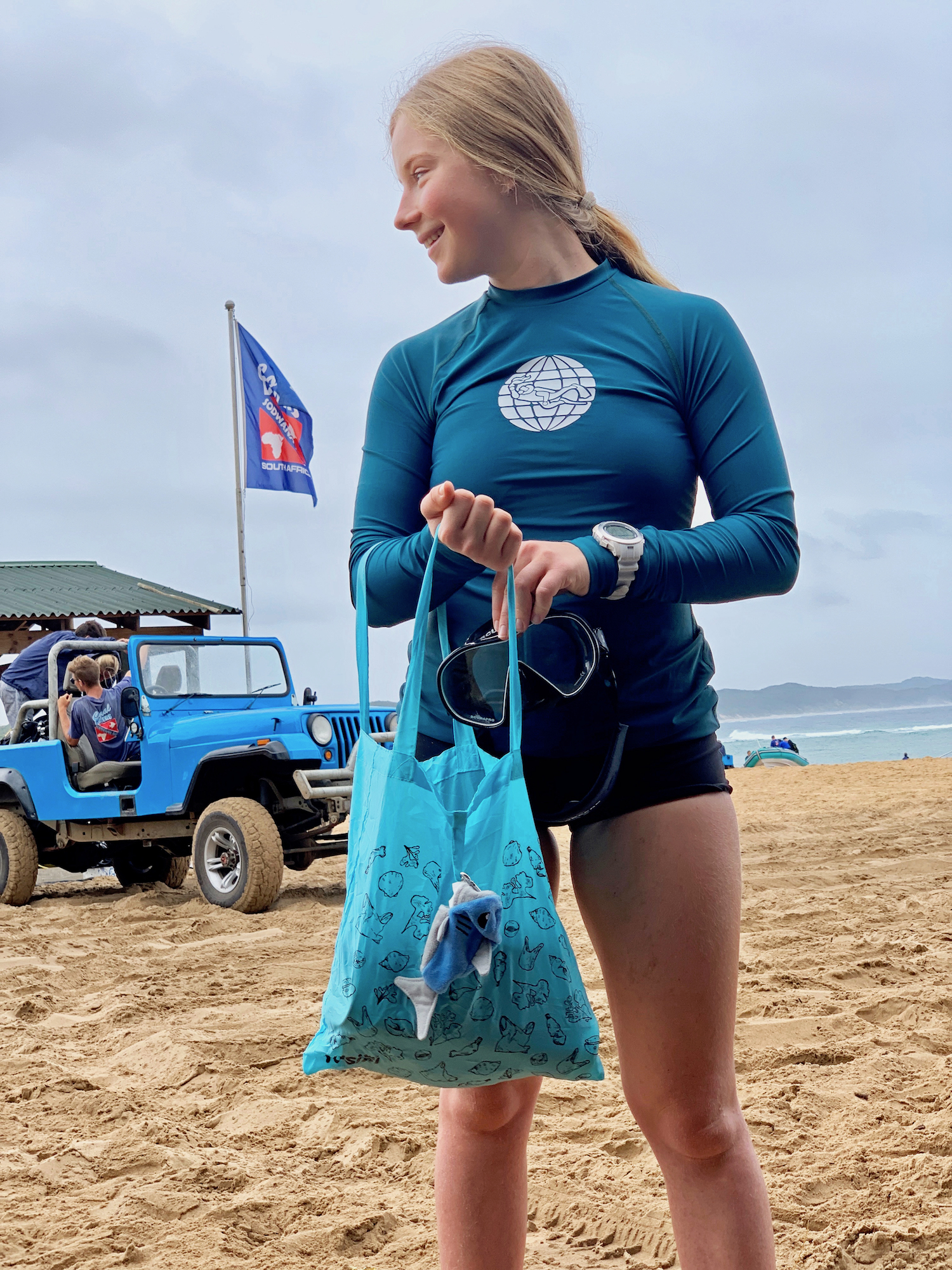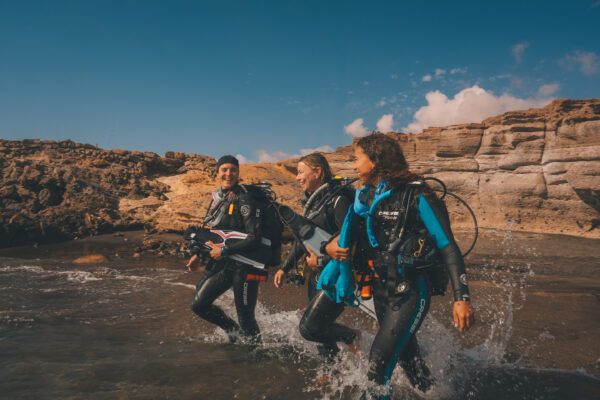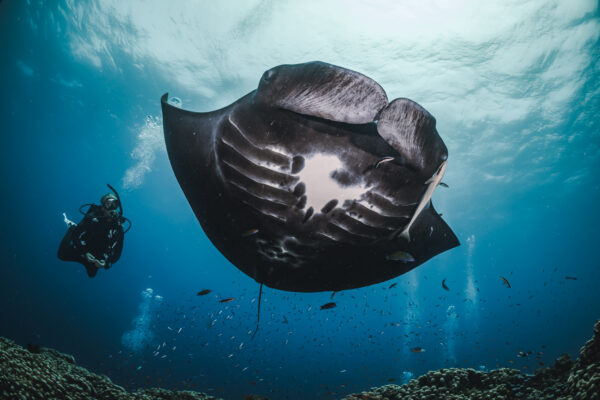Some types of sunscreen, even those labeled as reef safe, can harm marine life and kill coral. Here’s what PADI® Pros and their students need to know about choosing sun protection that’s safe for our bodies and the ocean.
Chemical vs. Physical Sunscreen
There are two types of sunscreen – physical and chemical. Physical sunscreens use minerals, such as zinc oxide, to reflect harmful ultraviolet rays. Chemical sunscreens absorb UV rays and typically contain one or more of the following: avobenzone, benzophenone/oxybenzone, ecamsule and/or octocrylene.
These chemicals are not only bad for coral, they may be bad for humans too. A recent FDA study found chemical sunscreen ingredients can enter the bloodstream and remain in the body for 24 hours or more after application.

Oxybenzone (also known as benzophenone-3 or BP-3) is proven to inhibit coral reproduction and can reduce testosterone levels in men. The chemical lingers in the body and has been found in amniotic fluid, urine, and blood. Oxybenzone has also been found in the breast milk of both human and dolphin mothers.
Several major dive destinations prohibit chemical sunscreens
Aruba, Bonaire, Hawai’i, Palau, and the U.S. Virgin Islands have banned sunscreens containing oxybenzone, octocrylene, and/or octinoxate. It won’t be long before other destinations follow their lead. Some bans forbid the sale or distribution of sunscreens with prohibited ingredients; others forbid having one in your possession.
In short: don’t put anything on your body (or in the ocean) you can’t easily pronounce. Here’s an informative video you can share on social media, or send to customers who have questions.
Can one person’s actions really make a positive difference? Yes!
Studies conducted in Hawai’i and the U.S. Virgin Islands found a minuscule amount of chemical sunscreen is harmful to coral. One drop in the equivalent of six Olympic-sized swimming pools is toxic to coral.
Imagine what happens at popular dive sites where hundreds of divers ooze chemicals onto coral every week. By teaching divers about reef safe sun protection, we can help prevent further damage.

What’s the best way to prevent sunburn and protect the ocean?
Physical sunscreens are a good alternative to chemical sunscreens, but they still wash off. Even natural ingredients like zinc oxide and titanium dioxide don’t belong in the ocean, so the only truly natural solution is to wear clothing rather than sunblock.
A long-sleeved rashguard with UV protection and broad-brimmed hat do a better job protecting your skin (and the ocean) than any sunscreen.
- Encourage divers to cover up rather than slather on
- Conduct dive briefings in shady areas/in a covered area of the dive boat
- Invite customers to trade in their unsafe sunscreen and get special pricing on a dive shop hat or rashguard
How to Choose a Reef Safe Sunscreen
Physical sunscreen, also known as mineral sunscreen, is the next-best-choice. That said, divers can’t trust what’s on the front of the bottle. They should always check the label, or buy from a trusted retailer – such as their PADI Dive Center or Resort.
Any company can put “reef safe” on their sunscreen.
There is no regulatory organization to verify whether a product is truly non-toxic. The only way to know if a sunscreen is reef safe is by checking the ingredients.
- Avoid sunscreens containing: avobenzone, butylparaben, ecamsule octinoxate, oxybenzone or 4-methylbenzylidine camphor.
- Choose a physical sunscreen with non-nano zinc oxide or titanium dioxide. Nanominerals make the product easier to apply, but ecotoxicology research has determined nanoparticles are not reef-safe.
- A sunscreen labeled “biodegradable” does not mean it is reef safe or non-toxic.
PADI LOVES Stream2Sea sunscreen because it was created by a cosmetic chemist and formulated without ingredients known to harm the environment. Learn more about Stream2Sea and purchase product here.
Sunscreen Application Tips
Physical sunscreens prevent damage from UV rays by creating a barrier on top of your skin. Here are a few tips to ensure great coverage:
- Put sunscreen on 20 minutes before sun or water exposure to ensure absorption
- Apply in dots instead of one big blob
- Rub in thoroughly to reduce whiteness
- Reapply every 90 minutes, or whenever the white sheen has worn off
If the sunscreen comes in a tube, it can be helpful to knead the product or warm it in your hands before application. There are also a few options for spray-on mineral sunscreens (see list at bottom of the article).
The world’s reefs already face massive challenges from pollution and overfishing. By educating divers about reef safe sun protection, we can keep dangerous chemicals off the reef and out of our bodies.



